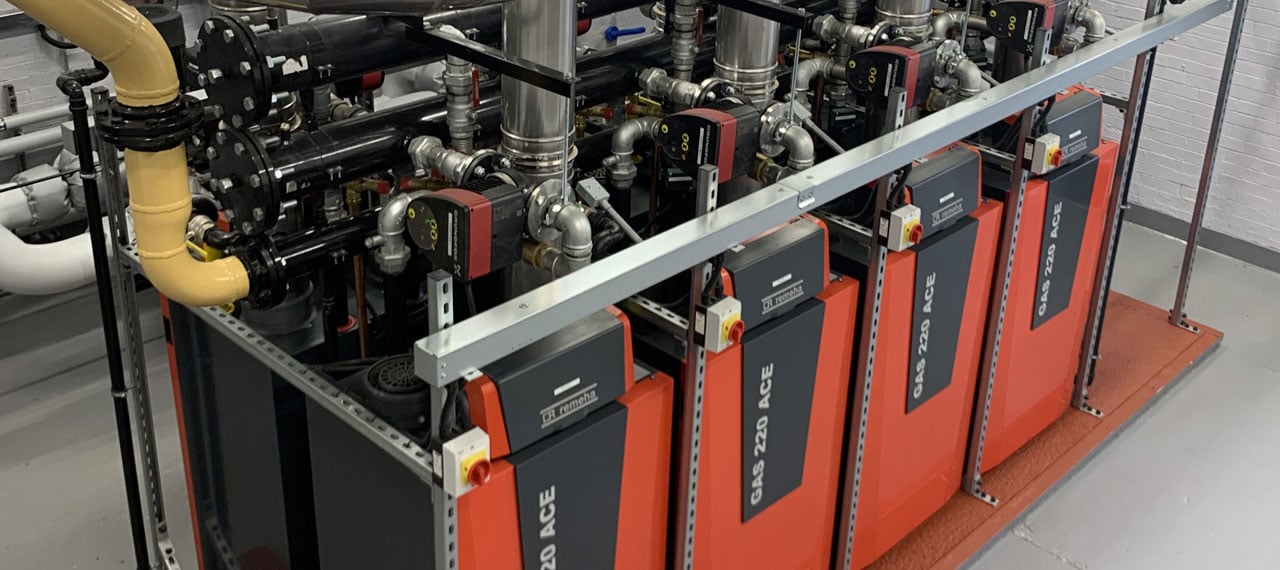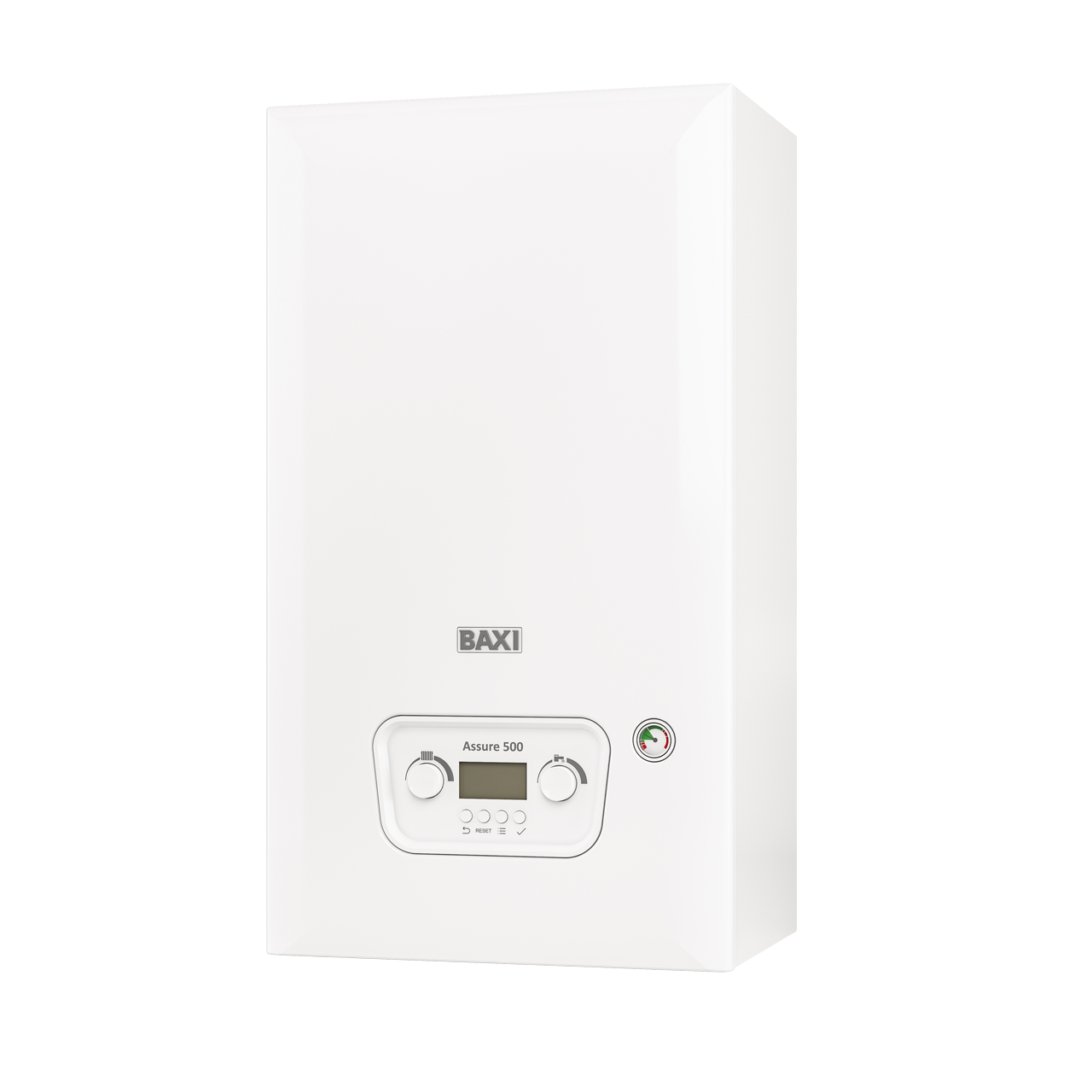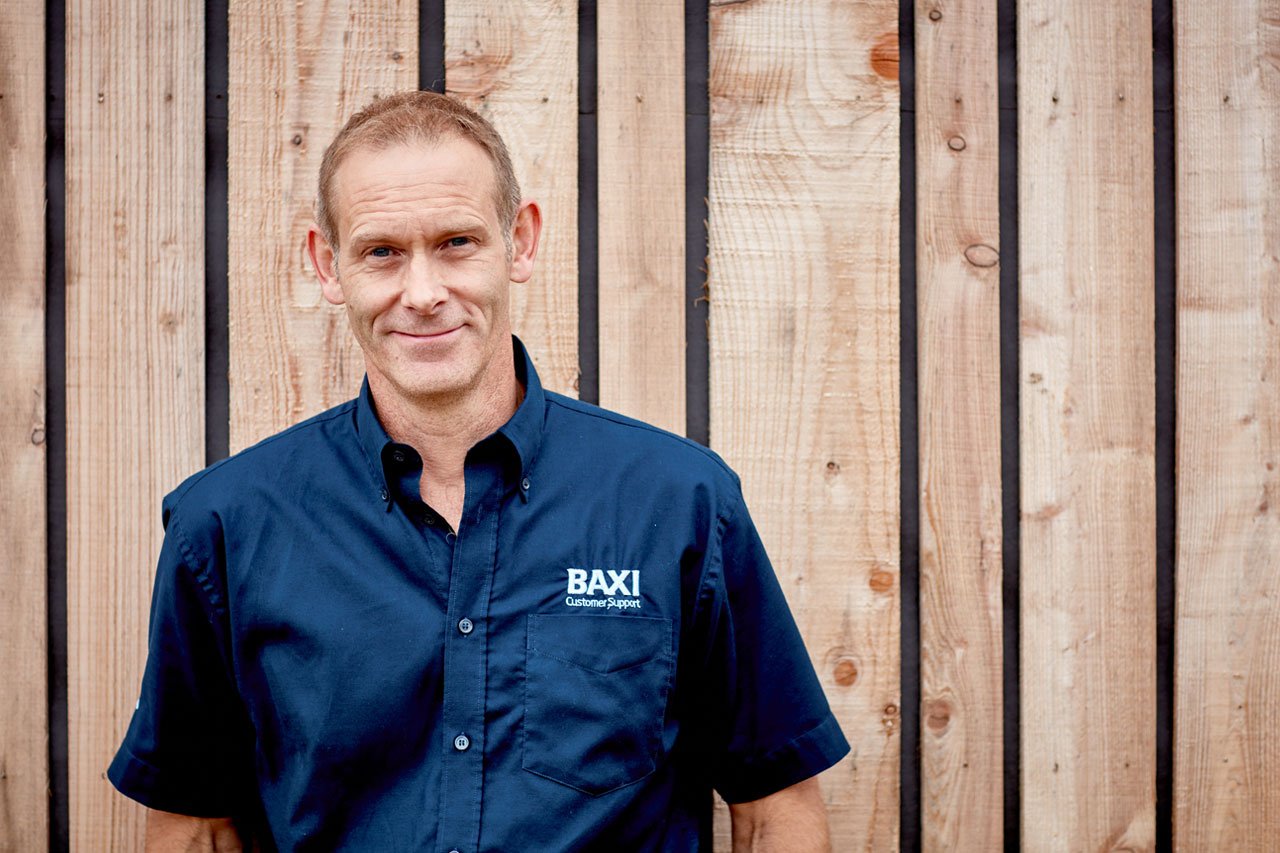
Why it pays to take it offsite - Bespoke offsite prefabricated heating solutions
With easier installation and maintenance, minimal disruption and enhanced quality assurance, it’s hardly surprising that bespoke offsite prefabricated heating solutions are on the rise.
Tony Falconar, National Sales Manager at Baxi Packaged Solutions looks at the benefits to facilities managers of taking it all offsite.
The pressure is on to reduce energy consumption and emissions in commercial buildings, with heating and hot water key targets for improvement. But shrinking plant room space, access restrictions and the need to minimise disruption to building operations are just some of the frequent obstacles faced by facilities managers on refurbishment projects.
The reality is that providing an efficient, modern heating and hot water system can be far from straightforward in many existing buildings. So how are heating technologies and techniques evolving to meet the challenge? One approach that is providing particularly effective and efficient is offsite fabrication.
Bespoke solution
Let’s consider how use of offsite fabrication can benefit refurbishment projects.
Whether planning a complete plant room installation or a partial heating system refurbishment, prefabrication makes everything simpler. Prefabricated and pre-assembled modules can be purpose designed to provide a quality plug and play solution that delivers valuable time savings, improved health and safety and enhanced quality assurance.
What’s more, the opportunity for offsite fabrication exists for the full range of applications, from the largest externally sited packaged plant room to a skid-mounted heating and hot water solution or single boiler system located within the building.
Minimised disruption
One of the main advantages of offsite fabrication is that it considerably reduces installation time compared with traditional onsite methods. Prefabricated, pre-tested and pre-assembled, the skid module or containerised plant room can be installed quickly and safely, minimising disruption, and keeping building operation running efficiently.
More efficient, future-proofed design
How does the process work? Early planning is essential when using offsite fabrication. Bringing together all key stakeholders at the outset means that all project requirements, along with any limitations and future plans, can be addressed from the outset for a future-proofed design.
This provides the opportunity for onsite FM professionals to get involved in the decision-making process and have an impact on the outcome. Issues such as space considerations relating to siting, maintenance and servicing of the new plant, for example, can be taken into account at the early stages. Where a phased refurbishment is intended, the need to plan ahead will also help smooth the next stages of the programme.
Offsite fabrication also offers the opportunity to relocate the heating and hot water services to the rooftop or an exterior location, freeing up valuable space within the building.
As each prefabricated module is typically designed using 3D computer-aided design (CAD) modelling and BIM tools, revisions can be made collectively while supporting best practice design, installation, operation, and maintenance. Integrating BIM with facilities management software systems will also make asset management and maintenance easier for facilities managers, maximising system efficiency.
Improved quality control
Once the final design has been approved, production takes place in a controlled factory environment. Thanks to the use of specialist machinery, improved control procedures and comprehensive end-of-line testing, the highest build quality can be achieved with greater efficiency. Sustainability is a major driver for businesses and their facilities managers. So, it’s worth noting that offsite fabrication also has the potential to reduce waste due to the offsite production process, leading to a lower environmental impact.
On schedule, on budget
A further advantage to FM professionals of using a packaged solution is that there is one point of contact for the whole system. The one-stop-shop system integrates the heat source – any combination of air source heat pumps, boilers, Combined Heat and Power, gas-fired water heaters and buffers – with pumps, controls, and accessories.
This hugely reduces the potential for delay, helping to keep the project on schedule and avoiding any risk of unexpected delays or cost overruns. An added bonus is that it enables just-in-time delivery, removing the need to store equipment on site.
In summary, offsite fabrication and packaged plant solutions provide facilities managers with an efficient means of overcoming frequent project challenges related to heating and hot water provision. Reduced disruption, easier maintenance and increased efficiency are some of the key benefits that will help FM professionals ensure that their buildings are operating smoothly and efficiently.
Containerised plant rooms
Containerised packaged plant rooms – either roof mounted or externally located – are increasingly popular, particularly on projects where strict limitations apply as to when work can be carried out. The packaged plant room can be purpose-designed in sections or as a single lift, depending on the site requirements, to enable straightforward transportation, accurate positioning, and easier installation.
Skid modules
Skids are similar to plant rooms but without the walls. Modular skids can replace part of a system in an existing plant room or be designed to meet new requirements and bolted onto the existing installed system. Skid modules lower space requirements through optimised design and a reduced footprint.
Cases in point
Customised rig
How and where are offsite fabricated solutions being used? One example is the bespoke boiler rig system installed by social housing provider Wakefield and District Housing (WDH) to replace ageing boilers serving the district heating system at their Smirthwaite Estate in Yorkshire.
Improved energy efficiency, reduced downtime and minimal disruption were the key requirements. The result was a customised rig with integrated boilers, insulated pipework set and pumps, a PHE, pressurisation unit, dosing pot and an expansion vessel.
This was an unusually large project for WDH’s in-house technical team, but the bespoke rig system provided a good structure for their engineers, avoiding the need to size the individual components and saving a significant amount of installation time.
Skid modules refurbishing energy centre
Another example is the bespoke-designed packaged plant solution that is providing heat and power at Blackberry Hill, a landmark redevelopment in Bristol for Vistry Partnership working with Homes England, Bristol City Council and Sovereign Housing Association.
A Combined Heat and Power (CHP) and boiler system was selected to serve the four district heat circuits feeding the original building and the new additional blocks.
The very tight space within the plant room and the building’s listed status were major concerns on this project. The chosen solution was to use tailor-made boiler skids with pump sets and fully insulated prefabricated pipework, using specialist equipment design to achieve the compact footprint that the project required.
The skids connect onto two prefabricated frames accommodating the pumps and high-level pipework. These fit against the walls, leaving sufficient space for the CHP and the two buffer vessels situated at the opposite end of the plant room.
Using a quality offsite-fabricated solution successfully overcame all the project limitations, turning what would have been an extremely challenging installation into a faster, easier and safer process.
Baxi Packaged Solutions
We are specialists in prefabricated modular systems, offering a complete service from concept to completion
Baxi Design
Our Baxi Design team provides a complete design service which includes SAP assessments for projects that incorporate Baxi Assure products.




